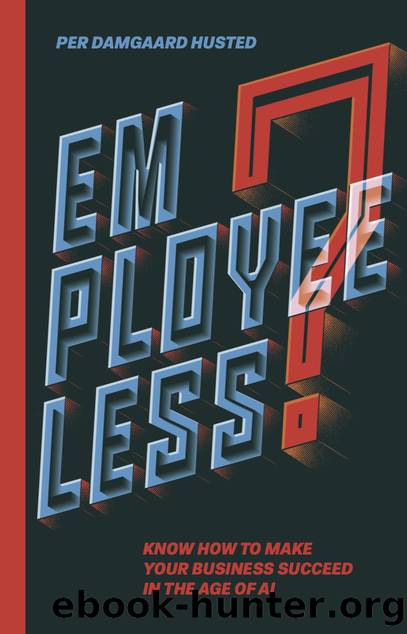Employeeless?: Know how to make your business succeed in the Age of AI by Husted Per Damgaard

Author:Husted, Per Damgaard [Husted, Per Damgaard]
Language: eng
Format: epub, pdf
Published: 2020-08-21T16:00:00+00:00
Usually, when one would have to describe complexity on a scale, most people would choose a range that goes from very complex to very simple. Because we as humans understand complexity to a certain level. So, looking at complexity in that way reflects the way we can process knowledge.
But it is not relevant to see the world that way when the focus is on AI.
Here, it is not the complexity level that determines whether AI can solve a task well or not. AI is super good at dealing with very high levels of complexity. That is not a problem.
But there must be a learning base for our AI. That is why, on an AI scale, we deal with predictable and unpredictable complexity, and not as we do as humans to see the range from complex to simple:
-Predictable complexity: The goal and outcome areas can be easily defined. The correct behavior can be learned quickly from AI (and perhaps with limited data available)
-Unpredictable complexity: Objectives and outcomes are unclear. Here, it is difficult for AI to learn what the correct behavior is
Therefore, a fundamental premise for the introduction of AI is the scale from predictable to unpredictable complexity. The easier the problem output can be predicted, the better it can be to solve with AI.
Predictable complexity
Predictable complexity is if the actors in the area you look into have predictable behavior.
This point can be illustrated with a bank example.
Banking customers who need phone service from their bank typically need information or advice on products or have specific questions about their account transactions. If they have questions about products, the bank knows from experience what customers would ask for, and thus may have prepared answers to many such issues in advance.
In other words, the complexity that needs to be addressed is relatively predictable. Experience has shown what the customer needs are and how to best give them the information they need. And - this is important - it is possible to define precise success criteria for when the tasks have been solved with success.
Knowing the span of possible outcomes and when it is solved with success is central to AI.
Download
Employeeless?: Know how to make your business succeed in the Age of AI by Husted Per Damgaard.pdf
This site does not store any files on its server. We only index and link to content provided by other sites. Please contact the content providers to delete copyright contents if any and email us, we'll remove relevant links or contents immediately.
Time Management Made Easy: How to Cultivate New Habits, Improve Productivity and Get Things Done by Joshua Strachan(2367)
The 7 Habits of Highly Effective People by Stephen R. Covey & Sean Covey(2098)
The Concise Laws of Human Nature by Robert Greene(1718)
Doesn't Hurt to Ask by Trey Gowdy(1555)
Primal Leadership by Daniel Goleman(1129)
Hook Point: How to Stand Out in a 3-Second World by Brendan Kane(1098)
HBR's 10 Must Reads 2021 by unknow(1045)
Don't Sweat the Small Stuff...and It's All Small Stuff by Richard Carlson(1016)
Amazon Unbound by Brad Stone(980)
100 Things Successful People Do by Nigel Cumberland(964)
HBR's 10 Must Reads 2021 by Harvard Business Review(956)
The Job Closer by Steve Dalton(939)
Master of One by Jordan Raynor(934)
Lives of the Stoics by Ryan Holiday & Stephen Hanselman(900)
Declutter Your Mind: A step by step guide to learn to control your thoughts, stop worrying, relieve anxiety and eliminate panic attacks and negative thinking by Mia Chandler(875)
The Power of 100! by Shaun King(845)
Conflicted by Ian Leslie(798)
Coders at Work: Reflections on the craft of programming by Peter Seibel(789)
The Book of Hope by Jane Goodall(744)
